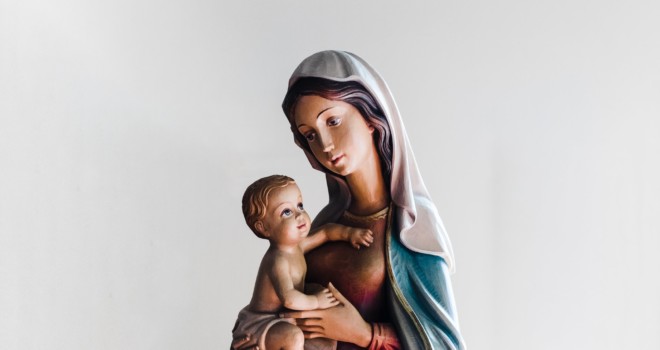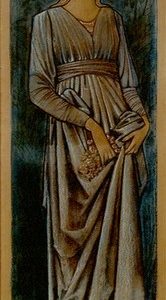Castel Gandolfo is one of the most beautiful places in the Alban Hills, half an hour from Rome by car, magnificently situated above Lake Albano. For centuries, the summer residence of the popes has been located here, but since 1934, the Vatican Observatory has been, too: it was moved from Rome to Castel Gandolfo by Pope Pius XI, because back then it had already become impossible to observe the night sky in the metropolis, which was inundated with artificial light. The same pope at that time entrusted the administration of the observatory to the Jesuit order.
And now, some time ago, two Jesuit fathers, during their astronomical observations, discovered a new planet in the firmament.
The news traveled around the globe. But for me, the astronomical discovery brought back the memory that at times, similar things occur in the doctrine of the Faith. Through ever more precise observations of the starry sky with constantly improving, more sensitive optical instruments, from time to time, astronomers manage to discover a new star that was not known before. Naturally, this star does not begin to exist only when it is discovered. It already existed long before that. But no one saw it. Until then, the calculations and observations had been insufficiently exact, the instruments insufficiently sensitive, the determination insufficiently accurate.
Something similar happens when we observe the wonderful firmament of the truths of revelation, which God has imparted to us human beings through His Son Jesus Christ and the apostles. Through exact observation, from time to time, a new star in the sky of divine revelation is discovered—and not just created!
So it was around the middle of the nineteenth century: theologians, like astronomers, had trained the telescope of their research on the morning star, or “stella matutina,” as Mary is called in the Litany of Loreto. They observed the rise of this morning star and discovered that its luminescence and brightness had been completely spotless from the very beginning.
In other words, theologians at that time focused their observations and research on the very beginning of Mary’s existence, and they discovered more and more clearly and unambiguously that from the moment of her conception, Mary was “full of grace,” free from Original Sin. Then, on December 8, 1854, Pope Pius IX, as supreme teacher of the Church, solemnly declared that the theologians’ discovery was accurate: it is a truth revealed by God, to be accepted and believed by all Christians, that Mary was conceived immaculate—in other words, free of Original Sin!
In the century that followed this infallible declaration, theologians once again concentrated their observations on the morning star. This time, however, they inquired not about its rise, but about its setting. They discovered more and more clearly and distinctly that this morning star knows no setting, but continues to shine in the next world in unclouded splendor, with the same—no, with even greater intensity.
This time, theologians were concerned not with the beginning, but with the end of Mary’s earthly life. And behold, they recognized that her radiant beginning as the Immaculate Conception has its counterpart in her luminous end: Mary’s departure without decay, a glorification of the Mother of God in soul and body. Ever more clearly, theologians realized something that had been part of divine revelation all along, and that had already been believed and celebrated with its own feast for a long time, at least since the
sixth or seventh century, namely: at the end of her life, Mary was taken up into the glory of Heaven not only in her immaculately pure soul, but also in her virginal body. She did not have to experience death in its most humiliating effect, namely, decay, but with her Son, she won complete victory over sin and its consequences, the foremost of which is death. She is enthroned in Heaven, body and soul, as queen of the angels and saints.
What theologians over the course of time had discerned more and more clearly about the morning star in the sky of divine revelation was neither misperception, nor the wishful thinking of the faithful’s zealous Marian devotion, but was and is the truth, which found its confirmation when Pope Pius XII solemnly declared the Assumption a dogma on November 1, 1950.
At the end of her earthly life, Mary was assumed, body and soul, into the glory of Heaven, and her Assumption was not so much an exception as the anticipation of what is to be imparted to all of us someday, if we—like Mary—prove faithful in keeping God’s commandments and in our love for God, who created us so that we may know Him and love Him. Thus, we have every reason to rejoice with all our hearts on the feast of Mary’s Assumption into Heaven, as Catholics did when Pope Pius XII proclaimed this article of faith on the feast of All Saints in 1950.
Even though Sacred Scripture reports nothing about the Assumption explicitly, but only mentions it parenthetically, the virgin Mother of God, with the power of her Divine Son, has truly become the woman who crushes the serpent (see Gen. 3:15). Even though Tradition, the handing on of the Faith by word of mouth during the first centuries of Christianity, is apparently still silent about the Assumption, it is true, nevertheless, that the Church down through the centuries was already convinced of what Pope Pius XII defined as a truth of the Faith revealed by God: Assumpta est Maria in coelum—Mary was assumed into Heaven body and soul.
This star of the dogma of Mary’s Assumption into Heaven brings light into the darkness of our time, in which superficial positivism has spread like an epidemic. In this disastrous system of practical godlessness, there is no room for God; there is no difference between spirit and matter, soul and body. Nor is there any continued existence of the soul after death or, consequently, any hope of another life in the next world. In opposition to this fatally false doctrine, the dogma of Mary’s Assumption into Heaven, body and soul, means to show, as if by a concrete example, that the spirit is what enlivens, animates, and transfigures matter to begin with; that the soul is immortal; that the body, together with the soul, is meant to attain eternal happiness; and that therefore, the hope for another life is not in vain, but will find true fulfillment, because with death everything is not finished; rather, life really begins then.
Thus may the star of the mystery of Mary’s Assumption into
Heaven, which we so solemnly celebrate today, shine into the darkness of our time. Let us take to heart as believers the admonition of the great Marian devotee Saint Bernard of Clairvaux:
O, whoever you are: when you perceive yourself during this mortal existence to be floating in the treacherous waters, at the mercy of the winds and the waves, rather than walking secure on the stable earth, do not turn your eyes away from the splendor of this guiding star, lest you be submerged by the tempest! When the storms of temptation burst upon you and you are driven upon the rocks of tribulation, look up at the star, call upon Mary. When buffeted by the billows of pride, or ambition, or hatred, or jealousy, look up at the star, call upon Mary. If troubled on account of the heinousness of your sins, and terrified at the thought of the awful judgment to come, and beginning to sink into the abyss of sadness, think of Mary, this radiant Morning Star, which despite the darkness points you in the right direction and shows you the way.
Sermon of Saint Bernard of Clairvaux on “Missus Est.”
Mary is the first of us human beings to whom the fullness of salvation was granted. In the yes He said to Mary, God said yes to all of us. The full reality of this yes will become manifest at the end of time, in the consummation of the world. But even now, the rays of God’s grace reach us humans, at times only after long prayer, sometimes in a surprising way.
The many votive plaques here at this place of pilgrimage attest to that. On them, we often read, “Mary helped.” Behind such words is the experience of many people that our world is not a godforsaken, bankrupt enterprise, and that our prayers and sufferings are not in vain.
God guides us, although often mysteriously. He wants to guide us through the hand of Mary. Let us grasp this hand gratefully and confidently, and she will never let us go. Amen.
✠
This article is adapted from homily found in How the Catholic Church Can Restore Our Culture by Archbishop Georg Ganswein. You can find your copy through your favorite bookstore or online through Sophia Institute Press.
Photo by Shannon Douglas on Unsplash













